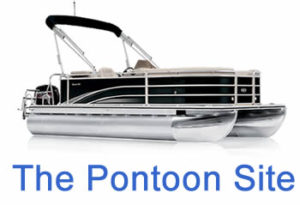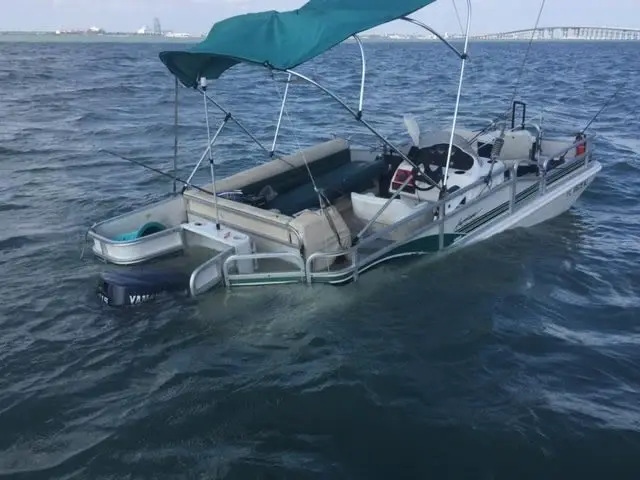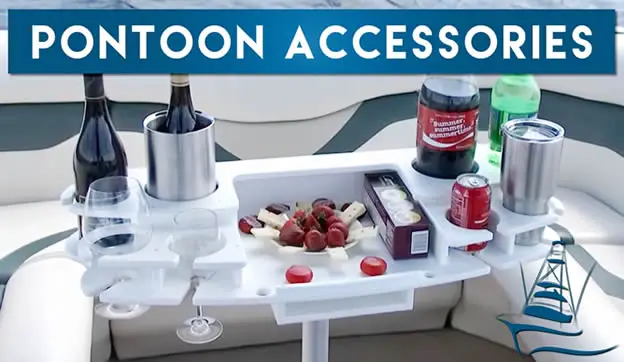Pontoon boats are fantastic recreational vessels that offer a sense of style and luxury for cruising and fishing on inland waters. They are very stable and safe boats when used in the right way, in the correct environment and under the appropriate conditions. So can these majestic boats sometimes sink?
Contents
- Pontoon boats can, and do, sink!
- Why pontoon boats sink
- Overloading is the biggest cause for a pontoon boat sinking
- Poor weight distribution can destabilize a pontoon boat
- Wrong motor types mounted can cause a pontoon boat to sink
- Water in the pontoon tubes can lead to sinking
- Incorrect handling is a major cause of pontoon boat accidents
- Using the boat in very harsh conditions will likely lead to a sunk pontoon
- How to prevent a pontoon boat from sinking
Pontoon boats can, and do, sink!
Due to their superior stability and the fact that they are one of the easiest boats to party on without falling over, many people think pontoon boats are unsinkable.
Can pontoon boats sink?
Pontoon boats can sink for a number of reasons. The most common reason for a pontoon boat sinking is overloading.
Poor weight distribution, using the wrong motors, having water in the pontoons, inappropriate handling of the vessel especially in waves and chop, and using the boat in the type of very harsh conditions it was not designed to be used in, are all things that can cause a pontoon boat to sink.
Pontoon boats are usually pretty stable vessels and they will be very safe to use if they are handled correctly, if you follow the manufacturer’s guidelines and if you maintain a healthy respect for both the water and mother nature.
When pontoon boats sink it is always down to human error. Sinking can, and should, be prevented. Of course if another boat hits your pontoon and there was no way you could avoid the collision that is a completely different matter (though still down to human error).
It may true that it is more difficult to sink a pontoon boat than other, less stable, vessel, but this does not mean the boat is unsinkable. There’s no such thing (remember the Titanic!).
Let’s examine the main reasons why pontoon boats sink.
Why pontoon boats sink
In this article I will address the main reasons a pontoon boat sinks when it is not hit by another vessel.
Overloading is the biggest cause for a pontoon boat sinking
Loading a pontoon boat to the point where it is over capacity is not a smart thing to do. Overloading is the biggest cause for pontoon boats sinking.
The problem with overloaded pontoon boats is that they tend to look fine even when they are well over their weight capacity. Because a pontoon boat deck is large and spacious people tend to load more stuff on it, including passengers, than is safe to do.
Even if a pontoon boat were so heavy that the pontoons/tubes were very low in the water the boat would still appear to be floating in a stable position. However, when you start the boat and attempt to move off it will quickly become apparent that the pontoon is going to sink.
To avoid overloading always follow the weight capacity guidelines of the pontoon boat’s manufacturer to ensure your load is well within the boat’s weight limits.
Taking look at the water line against the pontoons is a great quick way to determine if your boat is overloaded. The water line should never be above the middle of the pontoons. In fact, the lower the water line is, the better.
You should also note that the water line at the bow end of the pontoons should be lower than the water line at the stern end. When the water line at the front of your pontoons is lower than the water line at the back of them this means your boat is heavier at the back than the front. This is how it should be on a pontoon boat.
As you will see later, if a pontoon boat is not lighter at the front than the back it can lead to the boat taking a nosedive into the water. One main reason to ensure all the passengers on a pontoon boat party do not all congregate at the bow of the vessel.
Poor weight distribution can destabilize a pontoon boat
Not distributing the weight correctly on a pontoon boat can lead to the boat sinking, especially if the water is choppy.
As mentioned above, it is important that a pontoon boat is lighter in the bow area than at the stern. So make sure all your pontoon boat accessories are evenly distributed and not placed too far forward on the vessel.
When too much weight is placed at the bow of the boat the pontoons at the front of the boat are forced lower into the water. This causes a “ploughing” effect to occur when the boat is throttled up. The boat literally starts ploughing through the water instead planing above it.
When a pontoon boat “ploughs” through the water it will eventually start to take on water at the front end and will sink front first.
Wrong motor types mounted can cause a pontoon boat to sink
The HP of the motors on a pontoon boat are very important and must fall between the minimum and maximum power levels for that boat.
A motor that does not have enough HP to power a pontoon boat will be unable to lift the front of the boat out of the water sufficiently for the boat to get on plane. When that happens the ploughing effect mentioned above starts to occur.
Water in the pontoon tubes can lead to sinking
The tubes that a pontoon boat sits on are called pontoon tubes, pontoon logs or pontoon floats, though they are commonly just referred to as pontoons.
Although some modern pontoon tubes are pressurized most are simply hollow tubes that give the boat buoyancy and keep it afloat on top of the water. There are other kinds of pontoons – see what is inside a pontoon tube – but odds are the tubes on any pontoon boat you will be using are hollow.
These pontoon tubes have a tendency to take on water over time because they are shallow.
If there is water in the pontoons then the boat will sit lower in the water and thus be unable to get on plane. This also leads to the ploughing effect mentioned previously.
To avoid problems with the pontoons regular draining of the tubes is needed to maintain a safe boat. Pontoons are fitted with drain plugs that merely require you to unscrew them and let the water pour out before screwing the plug back in.
Some pontoons are chambered though and this can cause problems when trying to drain the tubes. When a pontoon is chambered it means the tube is sectioned into different parts.
Why is this a problem?
Well, there may be water in one chamber and none in the others. If the drain plug does not empty all the chambers you may find it difficult to get all the water out of the pontoon.
So draining chambered pontoons requires a different approach as outlined here.
Incorrect handling is a major cause of pontoon boat accidents
A pontoon boat is fairly easy to drive and offers a good bit of acceleration as many boats are capable of reaching speeds up to 25 mph, but that doesn’t mean you can drive one like it’s a speedboat.
Many people sink pontoon boats because they try to take waves and wakes too fast and without proper caution.
Pontoon boats require special handling especially when it comes to waves and the wake of larger vessels.
When you encounter the wake of a larger vessel you must slow down. With reduced speed you should then take the wake at roughly a 45 degree angle. Work the throttle so that you can lift the bow up on the initial wave, and keep it up on any subsequent waves that follow.
Trying to speed through waves and wake will cause your boat to take on water and it may lead to it sinking. Always slow down near wakes and on choppy water.
Using the boat in very harsh conditions will likely lead to a sunk pontoon
A pontoon boat is a recreational boat. It is designed for fun days in the sun. It is not a utility boat nor is it a deep draft boat designed for turbulent water.
As a shallow draft vessel a pontoon boat performs best in calm shallow waters. It will struggle in rough water.
Never use a pontoon boat in very bad weather conditions or in very challenging waters. Although pontoon boats can be used in the ocean, they can only be used under very specific conditions and only close to the shore.
How to prevent a pontoon boat from sinking
To prevent a pontoon boat from sinking follow the advice in this article. Here are some tips:
- Don’t overload the boat. Adhere to the pontoon boat’s weight capacity.
- Ensure cargo & passengers are evenly distributed across the deck.
- If you own the pontoon boat check it is fitted with the correct motors.
- Check the pontoon tubes for water & damage as part of your regular pontoon boat maintenance schedule.
- Learn how to drive a pontoon boat and go easy with the throttle.
- Never venture far from shore when the weather looks nasty. In fact, avoid using a pontoon in rough waters completely.
Most pontoon boats that sink, sink front first. This is known as a nosedive.
We have covered the subject of why pontoon boats nosedive and how to prevent it in the article why did my pontoon boat nose dive.
That article also has an easy-to-implement simple trick to completely eliminate the change of your pontoon boat nosediving, regardless of the conditions.



